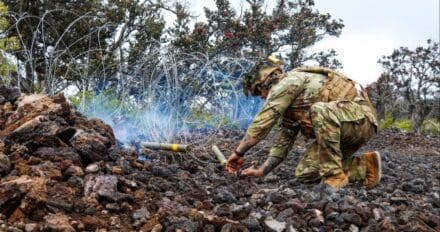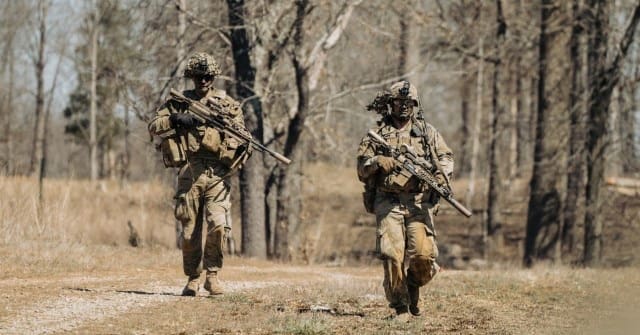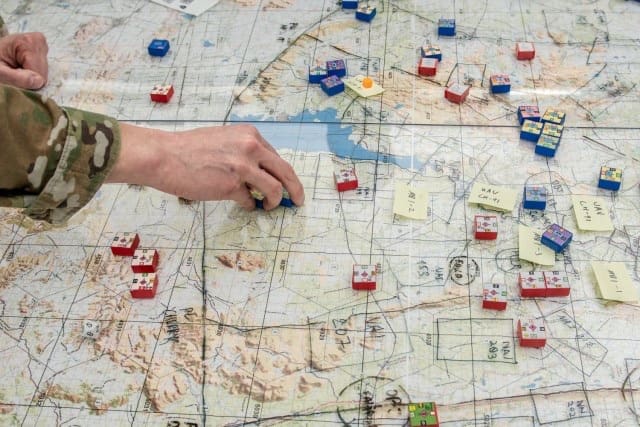The Legacy and Modern Role of Sappers in the U.S. Army Corps of Engineers

WASHINGTON Within the ranks of the U.S. Army Corps of Engineers (USACE), the term sapper carries significant weight, symbolizing a rich history that spans 250 years. Sappers have long served as elite combat engineers, providing crucial support to frontline infantry in every major conflict throughout American history.
A sapper, in a historic sense, traces back to the 17th century. Its a French term, explained USACE Command Sgt. Maj. Douglas Galick. The origins of the term are deeply rooted in military engineering, where engineers would excavate trenches designed to breach enemy defenses while minimizing exposure to enemy fire.
Those trenches were referred to as saps. The soldiers who undertook this perilous task were known as sappers, added Brig. Gen. Joseph Goetz, commanding general of USACE Pacific Ocean Division. This long-standing tradition of sappers can be traced back to the American Revolution, during which military engineers played an instrumental role in constructing vital infrastructure such as roads and fortifications. The concept really has its roots in trench warfare, which originated even before the establishment of the American Army, noted Col. Francis Pera, USACE Baltimore District commander.
In contemporary warfare, sappers continue to fulfill the role of combat engineers, specifically trained to undertake some of the most demanding and critical battlefield responsibilities. An engineer leader who specializes in mobility, countermobility, and survivability, Galick elaborated. This encompasses a range of tasks, including clearing paths for allied forces, creating obstacles to impede enemy advancement, and constructing fortifications to safeguard soldiers during combat. Its fundamentally about how we create pathways for maneuver, Pera explained. We focus on stalling enemy movement while providing our team with the necessary time and space in the heat of battle.
In addition to their engineering duties, sappers are also called upon to operate as infantry when necessary, actively participating in modern offensive, defensive, and peacekeeping operations. A sapper is truly the cutting edge of the nations sword, stated Col. Christopher Klein, commander of the USACE Middle East District. They represent the best of the best in the engineer corps and often lead infantry troops, particularly in challenging situations.
The Sapper Leader Course is a rigorous 28-day training program that takes place across the diverse terrains of Fort Leonard Wood in Missouri and the Mark Twain National Forest. This challenging course equips participants with essential skills in mobility, countermobility, survivability, demolitions, engineer reconnaissance, and other technical abilities at the small unit level. The program serves as a vital force multiplier for maneuver commanders, enhancing their operational effectiveness in both peacetime and conflict scenarios.
The course is divided into two main phases: general skills and patrolling. Techniques ranging from advanced demolitions to land navigation, as well as the fundamentals of waterborne and airborne operations, are included in phase one, explained Maj. Blake Jones from the USACE New England District. During the patrolling phase, participants are tested on their leadership abilities under extreme stress conditions. The course is incredibly intense, remarked Maj. Charles Martin, USACE Baltimore District real estate field office realty specialist. It will push you to your limits.
This intensity is not arbitrary; it is intentional. We aim to establish a solid baseline so that when faced with real-life situations, individuals can respond adequately, stated Lt. Col. Nicholas Lorusso, USACE New England District deputy commander. Sapper School taught me that I can endure hunger and fatigue, pushing my body to the brink and still make sound technical and tactical decisions in high-stress environments, expressed Lt. Col. Lamar Cantelou, USACE aide de camp. Thats the crux of why this training is essential.
In 2024, the graduation rate of the Sapper School hovered just below 50%. As an engineer, you become akin to a Swiss Army knife, noted Capt. Walter Dezir, USACE Honolulu District project engineer. The Sapper Leader Course focuses on equipping you to operate effectively under a variety of weather conditions and challenging situations.
Obtaining the Sapper Tab is a prestigious achievement that signifies mastery in combat engineering and leadership. Theres a level of credibility associated with engineer leaders who wear the tab, Galick shared. When interacting with our maneuver counterparts, they genuinely regard an engineer leader adorned with the Sapper Tab as a master of their craft, the expert engineer on the battlefield.
The U.S. Army Engineer School (USAES), founded in 1866, formalized the training and development of combat engineers, ensuring that sappers remain integral to U.S. military strategy. The Sapper Leader Course was initiated in 1985 and achieved full accreditation as a United States Army Training and Doctrine Command course in 2004. That same year, on June 28, the Army officially sanctioned the wearing of the Sapper Taban initiative endorsed by then-Chief of Engineers Lt. Gen. Robert B. Flowers.
Since 2005, the USAES has hosted the Lt. Gen. Robert B. Flowers Best Sapper Competition at Fort Leonard Wood, which challenges the physical fitness, mental endurance, and technical skills of participating sappers. Competitors are required to traverse an arduous 50 miles in 50 hours while executing a wide array of tactical and technical tasks. This years competition, set for April 2529, commemorates both the 40th anniversary of the Sapper Leader Course and the 250th anniversary of the Engineer Regiment.
Retired Lt. Gen. Flowers remarked: When our nation needs a tough job completed, they turn to the Army. When our Army requires a challenging task executed, they rely on the sappers. After 250 years, the role of the sapper continues to adapt but remains vital to military operations across the globe. Their expertise in breaching obstacles, laying and clearing mines, and constructing field defenses ensures they are indispensable assets on the battlefield, enhancing operational capabilities.
Klein succinctly encapsulates the unique nature of sappers, stating, Sapper merges the analytical prowess of an engineer with the tenacity of a soldier.
By Kathryne Gest













